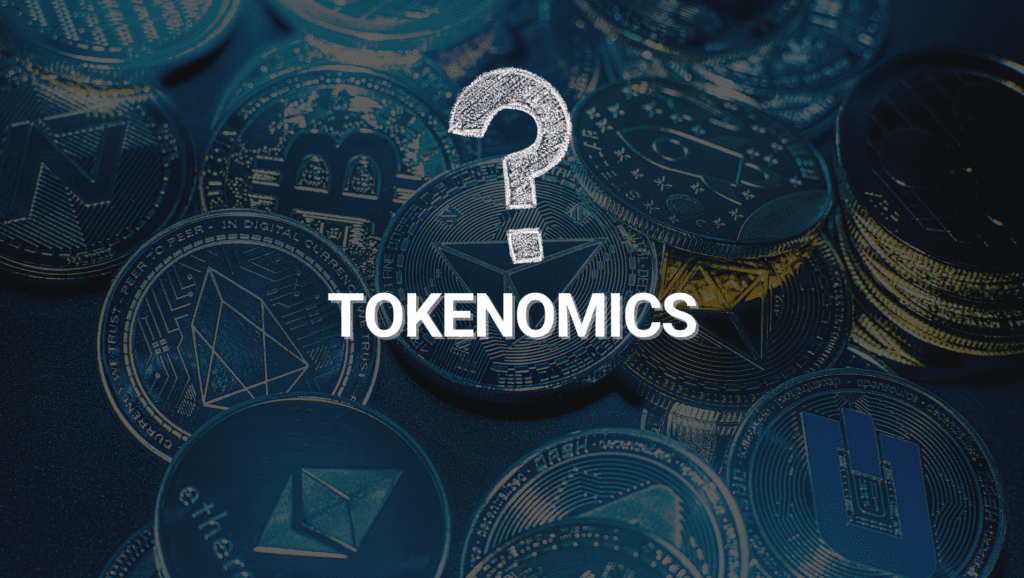In the past two years, many agreements have established tokenomics models. In order to allow investors to put funds in, many projects that focus on making money have designed economic models that consider short-term returns and sacrifice lost long-term sustainability.

Tokenomics, a blend of “token” and “economics,” is a catch-all term for the characteristics that provide a certain cryptocurrency value and appeal to investors. This covers everything from a token’s quantity and issuance method to factors like its usefulness.
But we all know this is not going to survive the next wave of crypto, and the winter season is a good time for builders to settle down and craft well-founded tokens that deliver sustainable outcomes for next-generation protocols.
In our content today, we provide you builders with a new perspective. The discussion begins with our belief that protocol tokens should follow two fundamental design principles:
- Tokenomics should reconcile public benefits that are difficult for participants to provide efficiently and economically on their own.
- Tokenomics should direct value to those who create value, prioritizing value distribution to high-utility groups rather than value transfer between participants.
Similar to the “Liquidity Mining” framework, these design principles are based on the basic idea of rational and value-maximizing economic exchange. There is no free lunch in the world, and short-term gimmicks are often at the expense of long-term value. Both project owners and participants should look for designs that clearly create and distribute fundamental value and be skeptical of designs that do not.
The importance of a good tokenomics model
The term tokenomics is vaguely defined and fascinating. It is a catch-all term that includes all of the following design categories:
- Initial supply and distribution to the team, investors, community and other stakeholders
- Distribution methods, including token purchases, airdrops, grants and partnerships
- Revenue distribution between users, service providers and protocols
- Fund size, structure and intended use
- Issuance schedule, including inflation, minting/burning rights and supply caps
- Token governance, including voting, escrow, stake weighting, vesting and metrics
- Compensation for miners and verifiers, such as fees, fines, etc.,
- The use of protocol native tokens and external tokens (such as ETH, USDC)
In this article, we will refer to tokenomics as the token-based distribution of incentives. We focus not on individual and operational issues but on defining first principles. Based on these principles, protocol designers can answer each question based on the most pressing trade-offs and concerns for their particular product.

Provide public benefit
The first core tenet of a strong tokenomics model is the ability to provide a public good. A good design should address the problem of collective action, organizing and motivating participants to collectively provide services that cannot be generated by individual actions.
Without a reward system, no participant would want to provide security for the network. But with a reward system, that decision-making changes. Participants stake for individually rational reasons, but collectively they provide benefits that can be enjoyed by all.
The public interest in crypto is motivated by the same incentives as taxpayer-funded goods and services such as public transportation, national defense, or public schools. In both cases, a well-designed public good typically has the following properties:
- Positive net utility: Total benefits to the community as a whole exceed total costs.
- Cannot be privatized: It is not economical for individuals to provide the goods due to direct costs and coordination costs.
Align rewards with value creation
A second core principle of a tokenomics model is the ability to compensate individuals for value created (and destroyed). In other words, a good design creates a clear and salient link between action and reward, maximizing incentives to create value.
At a high level, compensation (and punishment) for any participant in the system can theoretically be broken down into two parts: consistent (what they gain by providing value) and non-coherent (anything else). For example, the benefits of cutting a dishonest validator will be consistent since the cost is associated with the change in value (in this case, the loss). In contrast, giving a random validator a large token bounty would be inconsistent since there would be no value to justify that bounty.
While this is simple in theory, it is much more complicated in practice. First, any interaction within the system is often shared responsibility by multiple parties, and attribution is not always measurable. Second, the rewards for many key actions are remote (e.g., distributing community grants, establishing long-term partnerships, etc.), making it difficult to develop clear incentives upfront. Nonetheless, we believe this is a key principle that protocol builders should strive to achieve.

Furthermore, there is a strong link between consistent compensation and long-term value maximization. When protocol designers choose between optimizing short-term target metrics and long-term utility, two trends emerge in practice:
- “Consistent” health: Consistent compensation incentivizes commitment to risk or cost and other forms of long-term investment. Conversely, inconsistent compensation incentivizes employed capital, which tends to preserve maximum freedom to exit. For example, “farm-dumping” (i.e. immediate sale of rewarded tokens) demonstrates an asymmetry in liquidity mining.
- “Distorted” is costly: design mechanisms without adjustment compensation tend to destroy long-term value, especially when interacting with feedback loops. For example, artificially high rewards for holders of NFT collectibles could trigger speculative behavior, with brutal reversals once the rewards are exhausted—potentially destroying the perceived value of the collectible.
Some future ideas for the tokenomics
So far, we have applied our principles retrospectively and graded existing models according to their performance. Furthermore, how else can we provide direct and targeted incentives to individual champions of the public good?
Decentralization: Miner honesty is highly incentivized in practice, but miner diversity is rarely considered. In theory, miner diversity is widely understood as a form of public product. Does it make sense to have a progressive tax on validator rewards above a certain stake size?
Marketing: Visibility is critical to a protocol’s survival, so first, having a value in the sense of providing initial liquidity or usage to the network. Once a protocol reaches critical mass, participation driven by artificial rewards can be incremental or harmful.
Could the protocol reward early supporters by offering larger rewards to the first “X million” in TVL and then amortize those rewards as total liquidity grows? (APY is already falling as TVL rises, so this would be a more substantial drawdown above some expected level of liquidity.)
Grants and partnerships: Token cap tables often include large, open-ended allocations for developers building on the protocol and partners integrating with the protocol. However, these rewards can be quite decentralized and actionable. Is it possible to tie grant-based token rewards to on-chain metrics in a way that is not exploitable?

Conclusion
Token design is difficult because it requires answering a highly abstract, open-ended question: what deserves to be incentivized? It would be ideal if the protocol could try out different models, solicit early feedback, and iterate. But most teams only get one chance to set the dynamics of the system and must provide a solid foundation on the first try. We believe following these two core principles—creating common good and aligning rewards—will give these teams the best chance for long-term success.
This burden also falls on the wider community. Early investors, retail participants, and protocol users should all drive strong and principled token economics — now more than ever. During the last crypto bull run, many of the momentum-driven designs could only last in this exuberant market. Despite its flaws, a bear market needs real utility from the start.
DISCLAIMER: The Information on this website is provided as general market commentary and does not constitute investment advice. We encourage you to do your own research before investing.
Join us to keep track of news: https://linktr.ee/coincu
Harold
Coincu News






















